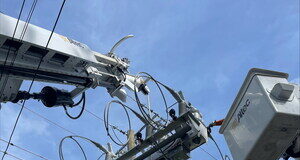News Americas, NEW YORK, NY, Weds. Feb. 19, 2025: Engaging with an opinion article or political commentary is more than just reacting to words on a page. You are uncovering the deeper currents beneath them. A thoughtful critique doesn’t just accept or reject an argument at face value; it questions the foundation on which it stands. For example, if a writer claims that stricter immigration policies will strengthen national security, take a step back. What evidence supports this? Are there historical examples where this approach succeeded or failed? What perspectives might be missing? True understanding comes from reading, and from reading between the lines.

Next, consider the article’s logical structure. Do the facts support the conclusions, or are they stitched together to fit a narrative? Strong opinions need solid reasoning to stand. Suppose an article argues that economic downturns always stem from government overspending. A sharp reader will ask: What about global market trends? Corporate practices? Unexpected crises? Every argument has its limits, and identifying them allows for a more nuanced and intelligent response.
A compelling critique pushes back and explores alternative viewpoints. Disagreeing for the sake of it is easy; true engagement means considering what else could be true. If an article claims social media is ruining public discourse, think of the flip side—hasn’t it also given a platform to unheard voices? Hasn’t it fueled movements for justice and change? Thoughtful critique won’t simply tear ideas down. It widensthe lens to see the bigger picture.
Clarity and conciseness are the pillars of insightful critique. A response overloaded with emotion or tangled in complexity loses its power. Instead of saying, “This article is completely biased and misleading,” refine your point: “The argument overlooks key economic forces, such as trade policies and technological shifts, that also shape the job market.” Precision strengthens persuasion.
Ultimately, a responsible critique aims not to win an argument. It elevates the conversation. A well-crafted response challenges assumptions, reveals blind spots, and refines ideas, all while keeping the discussion open. The next time you read an article, don’t just skim the surface. Dig deeper. Listen with curiosity. Question boldly. Engage as if you are dancing with ideas – moving with them, testing their rhythm, and discovering new steps along the way.










